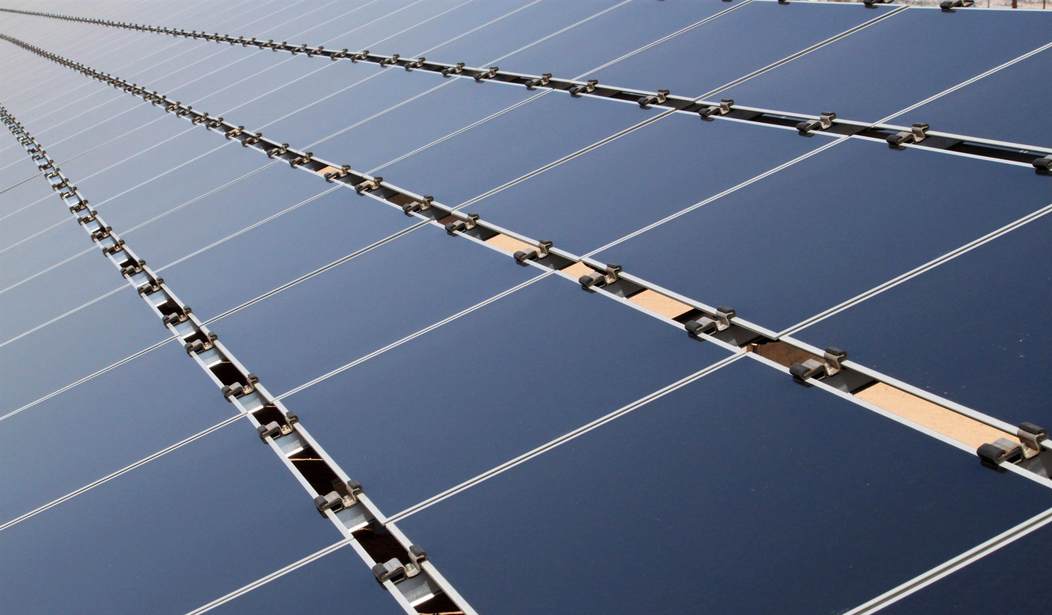Congressional Democrats are as determined as ever to sneak Green New Deal language into unrelated, important pieces of legislation, with cumulative costs running into the trillions of dollars. But lawmaker shenanigans are just the tip of the iceberg; taxpayers just can’t seem to catch a break from failed “green” energy boondoggles. In early October, taxpayers learned that the Department of Energy (DOE)-funded Crescent Dunes solar project is careening toward bankruptcy. Until the U.S. commits itself to free, open, and unsubsidized energy markets, solar boondoggles will continue to bury taxpayers in a mountain of debt.
The Crescent Dunes saga began in 2011 when the DOE agreed to loan project owner Tonopah Solar Energy $700 million to fund their large-scale solar endeavor. The project was supposed to be among the first of its kind, utilizing concentrating solar power (CSP) which relies on concentrated energy from the sun to drive turbines. CSP may have seemed promising to DOE bureaucrats in 2011, but the last 8 years have not been kind to the concept. The technology has proven costlier and less popular than crystalline silicon solar, and difficult to place in optimally sunny locales.
PV Magazine contributor Christian Roselund notes, “The fact that the plants operate optimally when located in areas with particularly intense sunlight didn’t help, as many of the locations chosen by developers led to lawsuits with conservationists and Native American groups.” But Crescent Dunes’ failures extended far beyond tough competition and lawsuits. Even after securing DOE funding in 2011, Tonopah wasn’t able to commence commercial operations until 2015. And since then, power purchaser NV Energy has been less-than-thrilled with the project’s output. NV Energy was supposed to purchase power from Crescent Dunes until 2040, but the project has failed to generate target electricity output over the past four years. Finally, on October 4, NV Energy called it quits and terminated their agreement with Crescent Dunes.
The failed CSP project is now mired in litigation as developer SolarReserve blames plant owner Tonopah and the DOE for this fiasco. SolarReserve charges that the DOE is bent on taking over Tonopah Solar Energy’s board of managers, possibly as part of a plan to put the project into bankruptcy. The company has received hundreds of millions of dollars from the agency yet balks at any attempt by bureaucrats to shut down operations even after the project has clearly failed.
Recommended
And the Crescent Dunes debacle is unlikely to be the last DOE investment that goes belly up. Everyone remembers Solyndra, the solar start-up that swindled $500 million from taxpayers via loan guarantees before falling into bankruptcy. In 2015, the DOE’s inspector general ripped the agency’s award decision-making process, stating, “Solyndra officials provided certain information to the Department that, had it been considered more closely, would have cast doubt on the accuracy of certain of Solyndra’s prior representations… the Department missed opportunities to detect and resolve indicators that portions of the data provided by Solyndra were unreliable.”
It’s easy to dismiss Solyndra and SolarReserve as one-offs, but other parts of the DOE’s portfolio haven’t proven promising either. Established in 2007, the agency’s Advanced Technology Vehicles Manufacturing Loan (ATVM) program has thrown billions of dollars at large automakers developing “advanced” fuel-efficient vehicles. Two of the five loan recipients (Fisker and VPG) have gone out of business since receiving taxpayer loans, while a third (Tesla) is having serious financial and management issues.
The DOE has acknowledged some of these failures, but more needs to be done to ensure that taxpayers don’t get ripped off by green boondoggles. In the case of Crescent Dunes, the agency’s maneuvers to take over the board and kibosh the failed project are a reasonable way of defending taxpayer money. Absent a favorable court ruling, Congress should take steps to affirm that the DOE and other agencies have the right to proactively defend taxpayer money when disaster strikes. But the best way to avoid these fiascos is by not spending taxpayer dollars on energy projects in the first place, and letting the market sort out winners from losers. Until policymakers realize this, there’s bound to be an endless cascade of Crescent Dunes.
Ross Marchand is the director of policy for the Taxpayers Protection Alliance.

























Join the conversation as a VIP Member